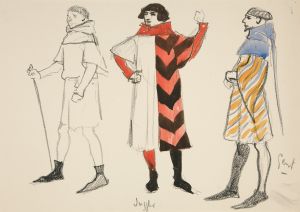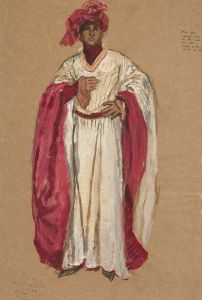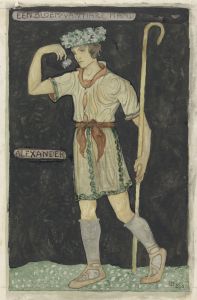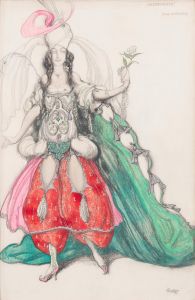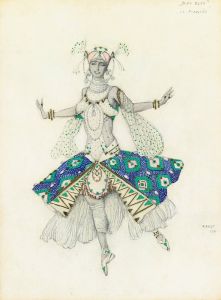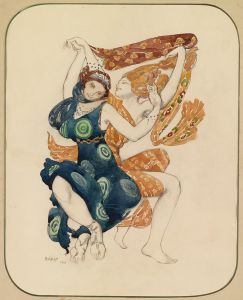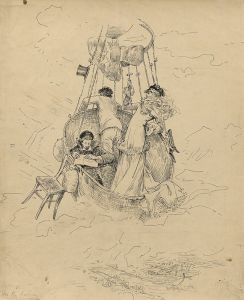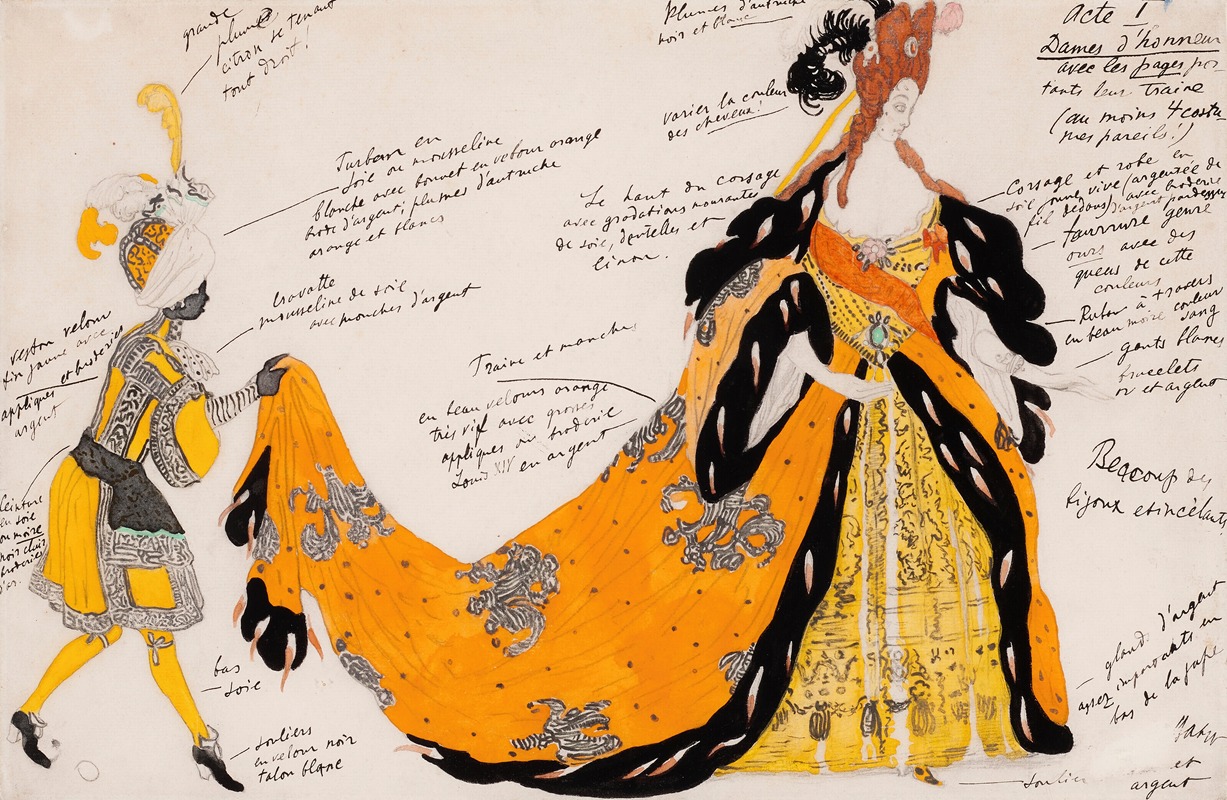
Costume design for ‘La Belle au bois dormant’; Dame d’honneur avec le page portant le train
A hand-painted replica of Léon Bakst’s masterpiece Costume design for ‘La Belle au bois dormant’; Dame d’honneur avec le page portant le train, meticulously crafted by professional artists to capture the true essence of the original. Each piece is created with museum-quality canvas and rare mineral pigments, carefully painted by experienced artists with delicate brushstrokes and rich, layered colors to perfectly recreate the texture of the original artwork. Unlike machine-printed reproductions, this hand-painted version brings the painting to life, infused with the artist’s emotions and skill in every stroke. Whether for personal collection or home decoration, it instantly elevates the artistic atmosphere of any space.
Léon Bakst, a renowned Russian artist and stage designer, created the costume design titled Costume design for ‘La Belle au bois dormant’; Dame d’honneur avec le page portant le train in the early 20th century. This work was part of his contributions to the world of theatrical and ballet costume design, an area in which he gained international acclaim. Bakst is best known for his association with Sergei Diaghilev's Ballets Russes, where his innovative and vibrant designs played a significant role in shaping the visual identity of the productions.
The costume design in question was created for a production of La Belle au bois dormant (The Sleeping Beauty), a ballet originally composed by Pyotr Ilyich Tchaikovsky and choreographed by Marius Petipa. Bakst's design reflects his characteristic use of rich colors, intricate patterns, and luxurious textures, which were hallmarks of his work. The specific design depicts a "Dame d’honneur" (Lady-in-waiting) accompanied by a page carrying her train, showcasing Bakst's attention to detail and his ability to evoke a sense of opulence and grandeur appropriate for the fairy-tale setting of the ballet.
Bakst's designs often drew inspiration from a variety of sources, including historical costumes, Orientalism, and Art Nouveau. His work for La Belle au bois dormant exemplifies his skill in blending historical references with a modern artistic sensibility, creating costumes that were both historically evocative and visually striking. The design for the Dame d’honneur, with its elaborate detailing and regal aesthetic, would have contributed to the overall spectacle of the production, enhancing the storytelling through visual means.
While Bakst's designs were primarily intended for the stage, they have also been celebrated as standalone works of art. His costume sketches, such as this one, are highly valued for their artistic merit and are often displayed in museums and galleries around the world. They provide insight into his creative process and his ability to translate narrative and character into visual form.
This particular design is a testament to Bakst's enduring influence on the fields of costume and stage design. His work continues to be studied and admired for its innovation, artistry, and contribution to the development of modern theatrical aesthetics.






